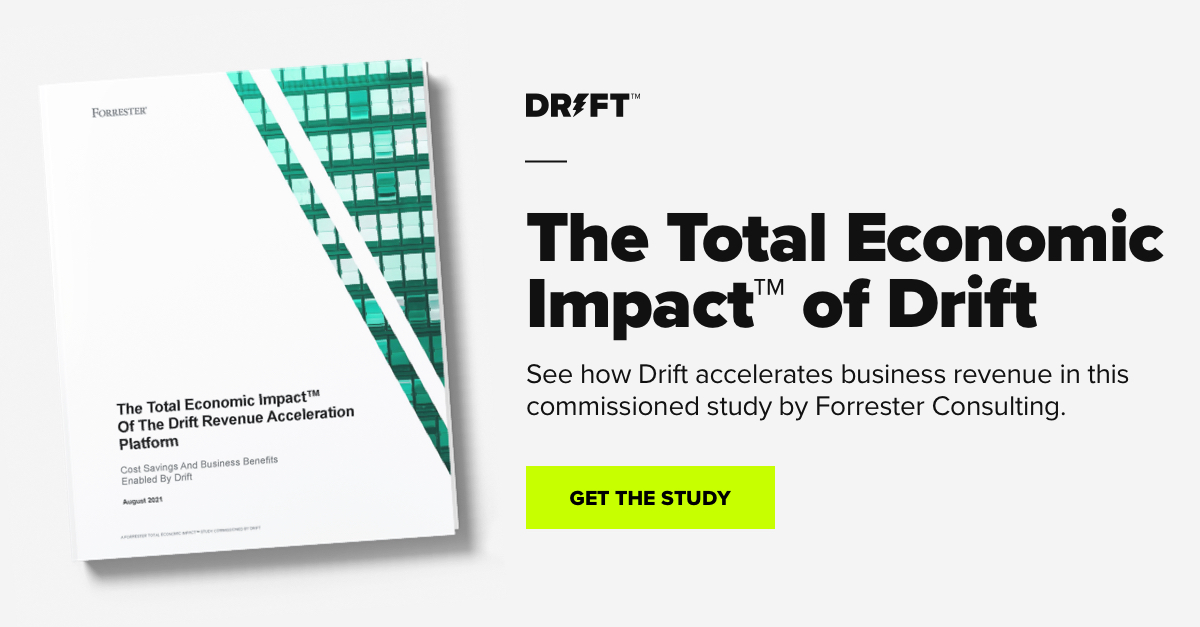The consumerization of B2B buying is nothing new, but its consequences are becoming harder and harder to ignore.
A 2021 study conducted by Drift and Heinz Marketing found that B2B buyer frustrations are at an all-time high. From being unable to access basic business information to having to deal with poor quality forms, buyers are not impressed with all the hoops they have to jump through.
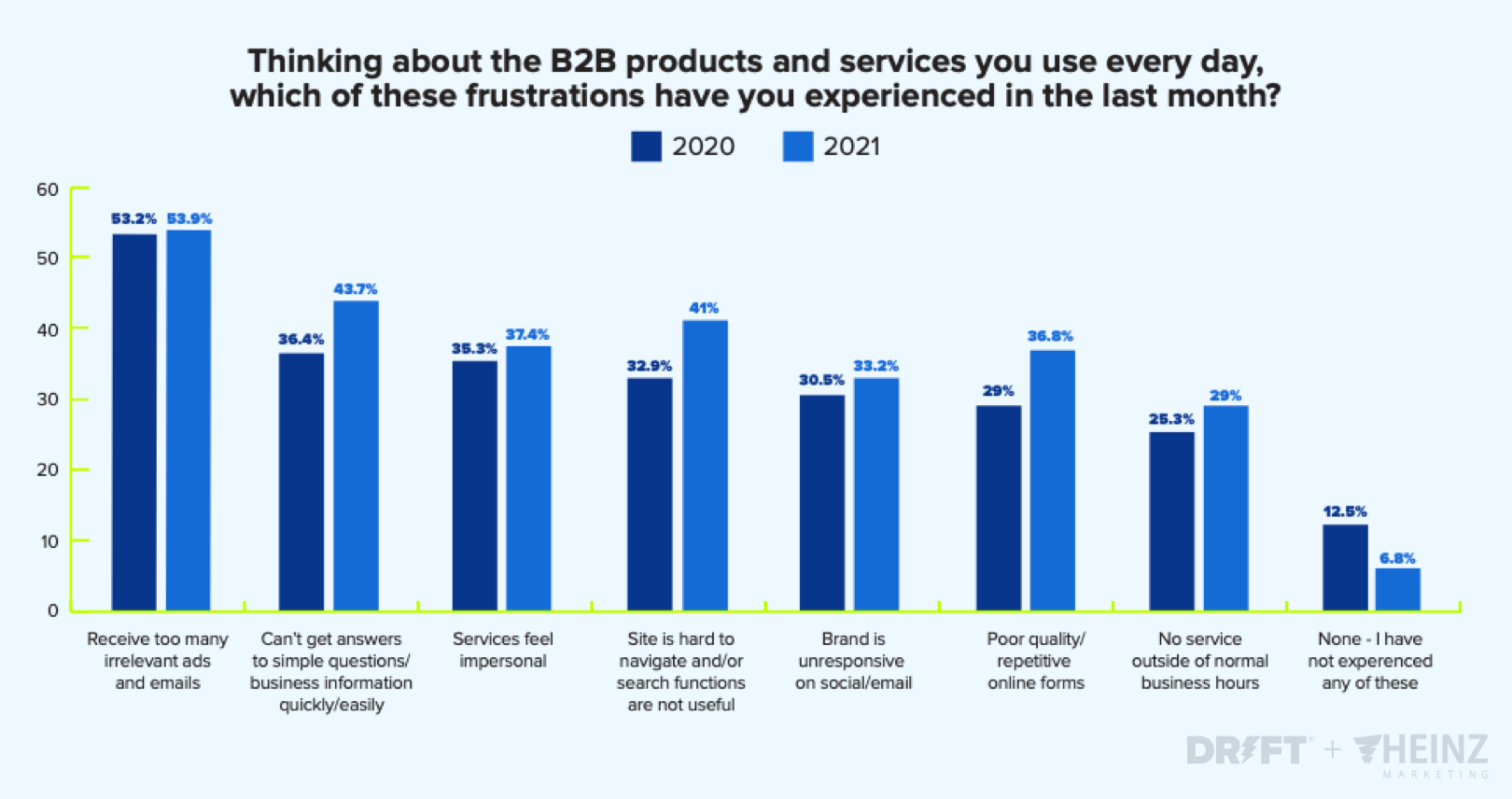
Today’s B2B buyers expect companies to offer a seamless digital experience like their B2C counterparts — one that is frictionless, always-on, and delivers instant gratification. In fact, 26% more buyers now expect a quick, personalized buying experience.
While the pandemic drove tons of investment into digital solutions, many companies are still feeling growing pains. To stay ahead of the competition, companies need to further close the gap between buyer expectations and the reality of their digital experiences.
As the Senior Director of Marketing Operations at ConnectWise, Rick Collins is responsible for figuring out the most efficient and effective way to adapt to this new reality. Here’s how he did exactly that with Conversational Marketing and Drift.
Rick discussed ConnectWise’s success with Drift on a webinar where he was joined by Mark Kilens, former VP of Content and Community at Drift, and Matt Heinz, President of Heinz Marketing. If you want to watch the full recording, click here. Otherwise, keep reading for all the insights 💡
ConnectWise’s Success with Drift During the Pandemic
As an IT management software company, ConnectWise was in the same boat as many other B2B SaaS companies in 2020 — looking for ways to navigate the new normal.
When COVID hit and people started working from home, they saw an enormous spike in interest for their remote control product, ConnectWise Control. Suddenly, they weren’t able to keep up with demand because they simply didn’t have enough people.
By then, they’d been using Drift for almost two years, having started with a conservative rollout in 2018. Drift helped ConnectWise manage the huge influx of site traffic by giving them a way to book meetings through chatbots.
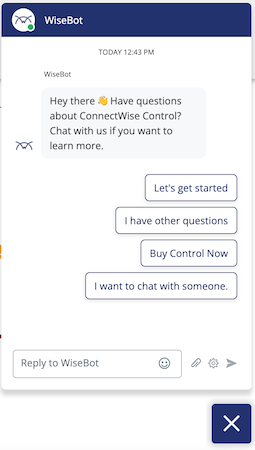
Drift’s ability to scale quickly to meet unexpected demand proved just how powerful Conversational Marketing could be, and in 2020, the company hit its entire revenue projection for the year in March. It was a pretty impressive success story.
From there, Rick and his team went all-in on expanding use cases across their products and business lines. And they have continued to put more focus on Drift to help achieve a buyer-centric experience. Here’s how 👇
Increasing Speed to Lead with Faster Response Times
Before ConnectWise implemented Drift, they — like most B2B companies — were all about forms. The problem is that, with forms, it can take anywhere from an hour to a day to get back to a raised hand. And in today’s world, that’s just not acceptable.
Since 2020, buyer frustration with poor quality or repetitive forms has grown by 27%.
Part of the challenge is the time it takes to process a form. “We’ve timed it, and it takes seven minutes for the information to get through each step within our tech stack,” Rick explains. “That’s seven minutes before a business development rep (BDR) is even aware that someone has filled out a form.”
Even in the best-case scenario, eight minutes will have elapsed before the buyer gets a response. And the likelihood of a BDR being able to respond immediately is pretty slim.
“With Drift, this process happens in a matter of seconds,” says Rick. “Giving prospects the option to connect immediately on our high-intent pages has resulted in 51% choosing to engage via Drift rather than waiting for a call. This has significantly reduced our speed-to-lead from hours in some cases to less than 30 seconds.”
50.7% of Conversational Marketing users attributed the success of their solution to quick response times.
Catering to the Buyer’s Needs for Greater Buyer Satisfaction
Today’s buyers aren’t willing to wait around. In 2021, the demand for immediacy in almost every conversation category grew by an average of 64% year-over-year.
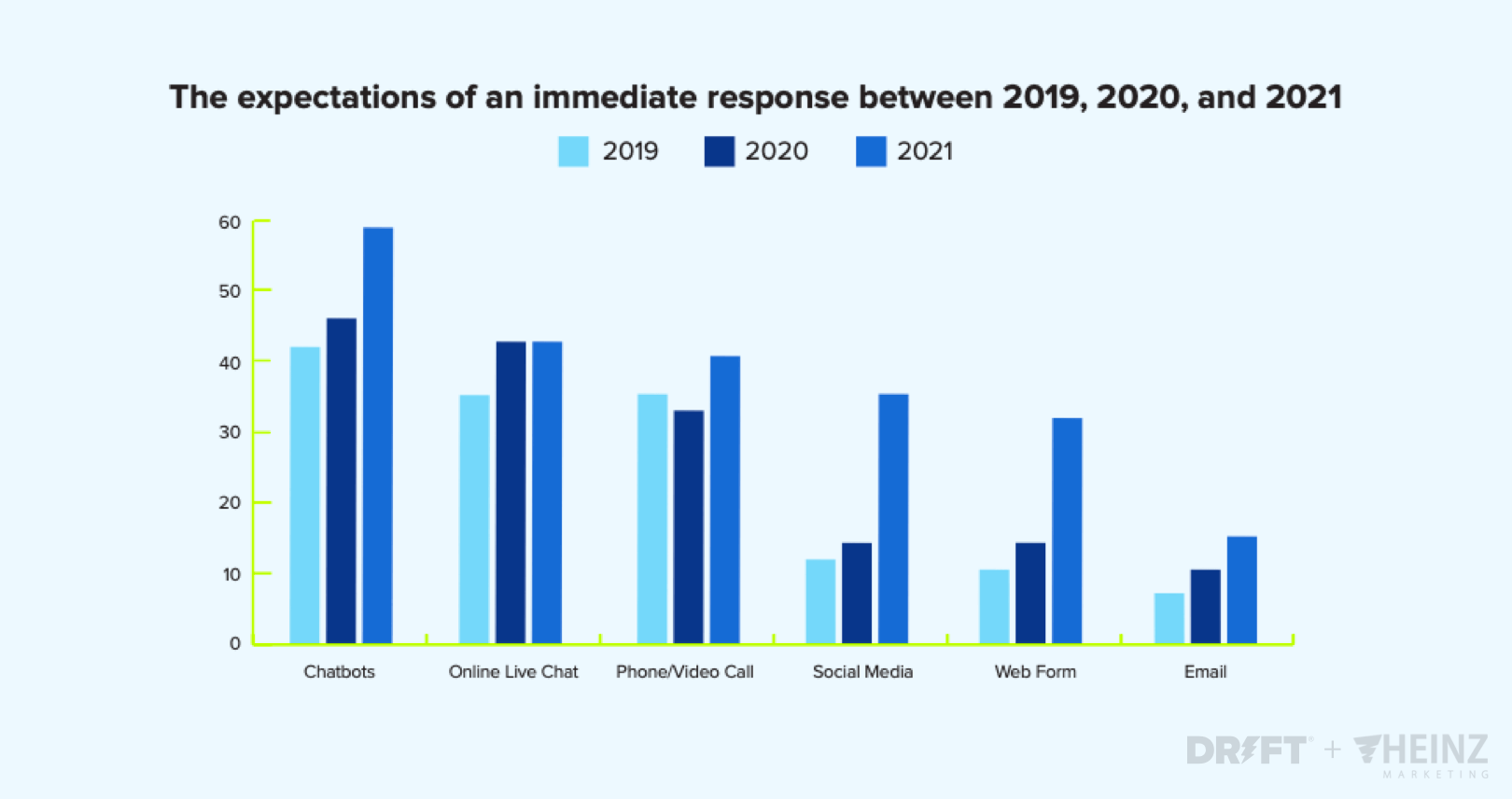
In an ideal world, companies would be available to respond to buyers all the time. But that’s impossible.
Drift’s chatbot allows buyers to engage with companies in their own time. For instance, if a sales rep isn’t available to chat, the buyer can easily book a meeting for a later date. This not only gives the buyer control but also saves time for sales reps because they don’t have to make three or four phone calls to get ahold of someone.
As Rick explains, meeting buyers where they are is an important part of the ConnectWise experience, “We’re all about giving buyers options. So while we still use forms for things like webinar registrations, we also offer the option to engage with sales via chat on the same page.”
Rick and his team employ this same approach for more than just booking meetings. For example, if someone has questions while on the ConnectWise website, Drift’s chatbot helps that person get what they need as quickly as possible. Rick sums up, “Ultimately, our goal is to be easier to do business with, no matter where people are in the buying journey.”
Using Conversational AI to Drive Efficiency (and Have Better Conversations)
In 2021, 82% of B2B buyers who used an AI-enabled technology found their solution to be very valuable to their marketing mix. With all the hype around AI, this is hardly surprising.
Conversational Marketing users who used an AI-enabled solution reported benefits such as qualifying buyers in real time and engaging buyers across the globe 24/7.
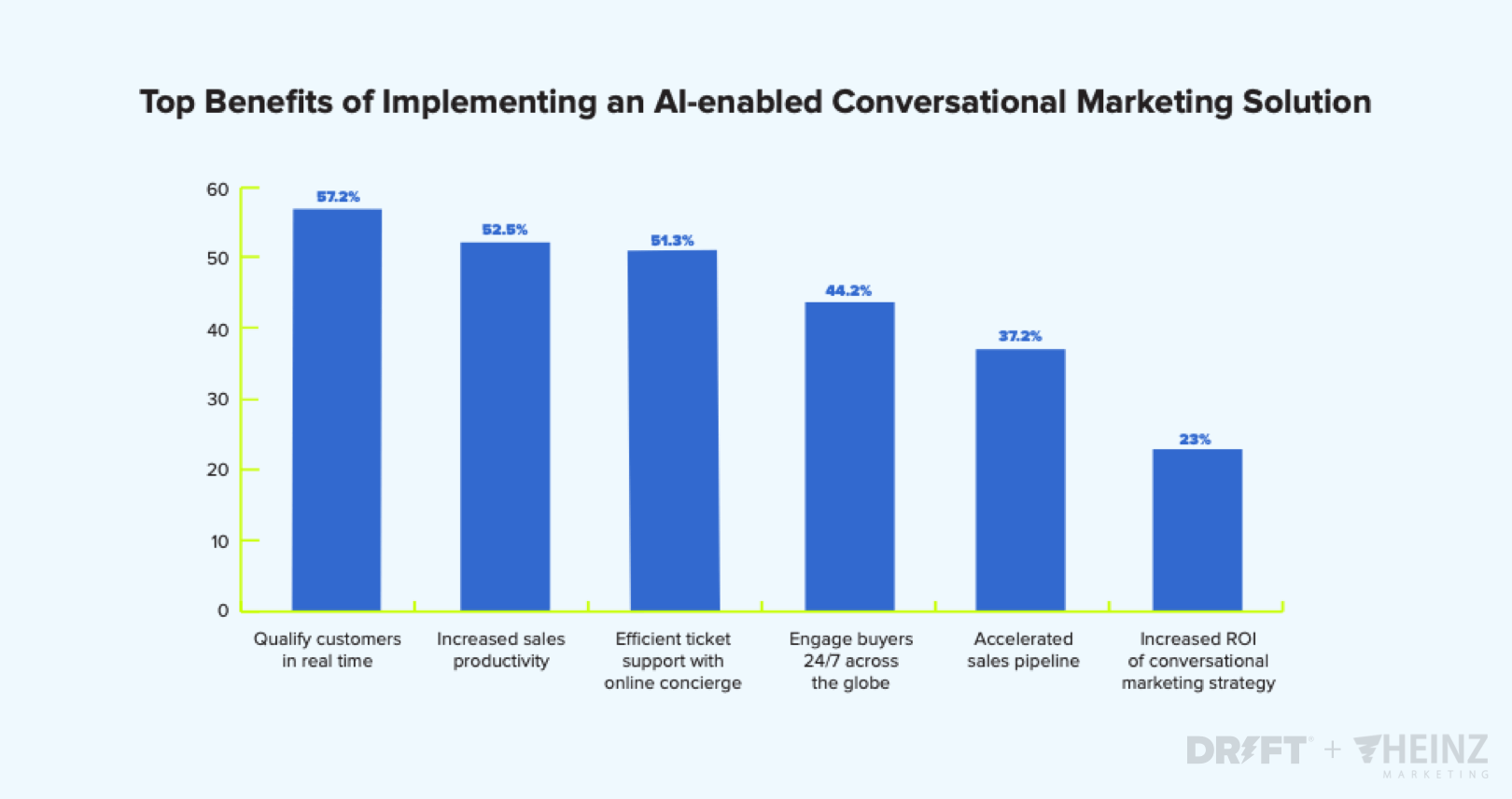
And while there is a perception that AI can never match up to a real person, the fact of the matter is that AI is much more efficient when it comes to initial conversations.
Why?
An AI chatbot can process and record information from buyers better than any human can. So instead of bouncing a call from one person to another and asking them to repeat themselves over and over, ConnectWise is able to use Drift’s AI to quickly route in the right rep and arm them with the right information (even with nine different products, segmented teams, and multiple verticals).
“We also saw greater alignment between our marketing and sales teams because Drift’s Conversational AI ensured we weren’t sending junk leads to sales,” adds Rick. “And, with the information that the AI collected, our sales team was able to have more productive meetings.”
Companies that saw high engagement with their Conversational Marketing solution had better sales efficiency (56%) and coordination with marketing to qualify leads in real time (49%).
The best part was that this all happened organically. Rick didn’t have to meet with sales repeatedly to show them how Drift led to better conversations. They could see the value for themselves.
The companies finding success with AI understand that it isn’t meant to replace people — it’s simply a more efficient way to handle those initial conversations. Plus, AI makes it possible for companies to scale by enabling them to go down-market without sacrificing profitability.
Giving B2B Buyers the Experience They Want Is Easier with Drift
With the always-on nature of the B2C world and our growing preference for digital platforms, there’s no doubt that B2B buyers will continue to demand immediacy and personalization from the buying experience.
Over the past few years, Drift has helped countless companies, including ConnectWise, make the transition to a conversational experience that meets the buyer where they are. As Rick concludes, “We’ve seen great success with these changes so, despite the usual challenges of working in a competitive market (and the not-so-usual challenges of a pandemic), we’re excited for what lies ahead.”





